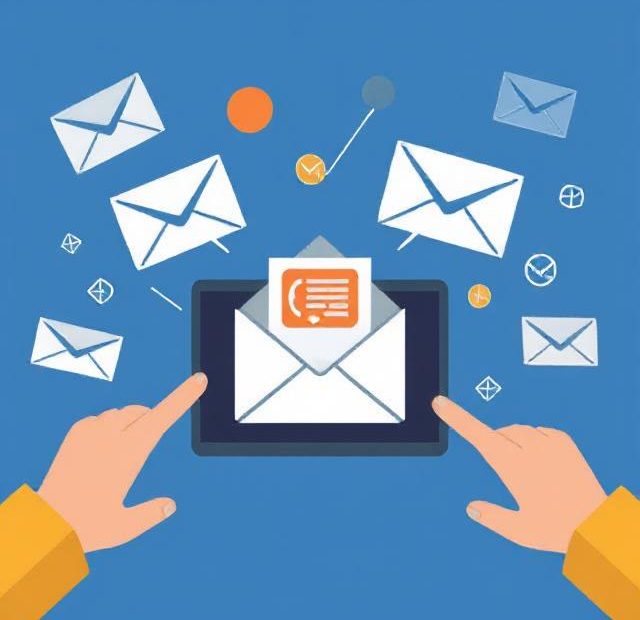In today’s digital landscape, email marketing continues to be one of the most powerful tools for building relationships, driving traffic, and boosting conversions. However, sending emails without a clear plan is like shouting into a void — ineffective and wasteful. To truly succeed, you need a solid email marketing strategy.
This guide breaks down the key steps to build an email marketing strategy that not only reaches your audience but actually drives meaningful results.
1. Define Your Goals
Every effective email marketing strategy starts with clear, measurable goals. What do you want your emails to achieve? Your goals will shape every aspect of your campaign.
Examples of common goals:
-
Increase website traffic
-
Generate leads
-
Boost sales or conversions
-
Promote a product launch
-
Improve customer retention
Use SMART goals — Specific, Measurable, Achievable, Relevant, and Time-bound — to stay on track.
2. Know Your Audience
Understanding your audience is crucial. You need to know who you’re talking to in order to craft relevant, personalized content. Start by analyzing your current customer base, website traffic data, and email subscriber behavior.
Key audience data to gather:
-
Age, gender, location
-
Interests and buying habits
-
Engagement level (clicks, opens, purchases)
Creating audience segments allows you to tailor messages that resonate with each group, improving open and conversion rates.
3. Build a Quality Email List
Your email list is your most valuable asset. Instead of buying email lists (which is not only ineffective but often illegal), focus on building a permission-based list.
List-building techniques:
-
Offer lead magnets (ebooks, checklists, discounts)
-
Use pop-up forms and sign-up boxes on your website
-
Promote your newsletter on social media
-
Host webinars or giveaways
Make sure every new subscriber understands what kind of emails they’ll receive and how often.
4. Choose the Right Email Marketing Platform
There are dozens of email marketing tools out there — Mailchimp, ConvertKit, ActiveCampaign, and more. Your platform should support your business goals and offer features like segmentation, automation, A/B testing, and analytics.
What to look for:
-
User-friendly interface
-
Advanced automation workflows
-
Customizable templates
-
Integration with your CRM and eCommerce tools
The right tool makes executing your email marketing strategy easier and more efficient.
5. Design and Craft Valuable Content
Your emails should provide value — not just promotions. A strong email marketing strategy balances helpful content with sales-focused messages.
Types of emails to include:
-
Welcome sequences
-
Newsletters
-
Product recommendations
-
Promotional offers
-
Educational content (blogs, how-tos)
-
Re-engagement campaigns
Make sure your content is concise, visually clean, mobile-friendly, and aligned with your brand voice.
6. Create a Content Calendar
Consistency builds trust. A content calendar helps you plan when and what to send, reducing last-minute rushes and content gaps.
Tips for your email calendar:
-
Plan emails around key dates (holidays, launches, events)
-
Set frequency goals (e.g., 1x weekly or 2x monthly)
-
Map out different email types by audience segment
Planning ahead ensures your email marketing strategy stays focused and organized.
7. Automate Your Campaigns
Automation allows you to deliver timely, relevant emails based on triggers like sign-ups, purchases, or inactivity. This improves user experience and increases engagement.
Essential automated email sequences:
-
Welcome email series
-
Abandoned cart recovery
-
Post-purchase follow-ups
-
Win-back/re-engagement flows
These help nurture relationships and guide subscribers down the conversion funnel.
8. Test and Optimize
No email marketing strategy is complete without regular testing. A/B testing allows you to fine-tune subject lines, CTAs, images, and send times.
What to test:
-
Subject line variations
-
Button color and placement
-
Email copy tone and length
-
Send time (morning vs. evening)
Use insights from your analytics to continually improve campaign performance.
9. Track Key Metrics
To understand how well your strategy is working, monitor key performance indicators (KPIs). These tell you what’s working and what needs improvement.
Important email metrics to track:
-
Open rate
-
Click-through rate (CTR)
-
Conversion rate
-
Bounce rate
-
Unsubscribe rate
Over time, data will reveal trends and help you refine your strategy for better outcomes.
10. Ensure Compliance with Email Laws
Respecting privacy and consent is not optional — it’s legally required. Familiarize yourself with regulations like GDPR (Europe) and CAN-SPAM (USA).
Compliance tips:
-
Always get permission before emailing
-
Include an easy unsubscribe link
-
Clearly identify your business and contact info
-
Honor unsubscribe requests promptly
Keeping your email marketing strategy compliant protects your brand and builds trust with subscribers.
Final Thoughts
A successful email marketing strategy is not built overnight — it’s crafted through research, planning, and ongoing optimization. By defining clear goals, understanding your audience, automating wisely, and tracking performance, you can turn your emails into powerful tools that drive real business growth.
Start small, stay consistent, and always prioritize delivering value. With the right approach, your email list can become one of your brand’s most effective marketing assets.
Also, you can learn more about Email Marketing Tips here.
